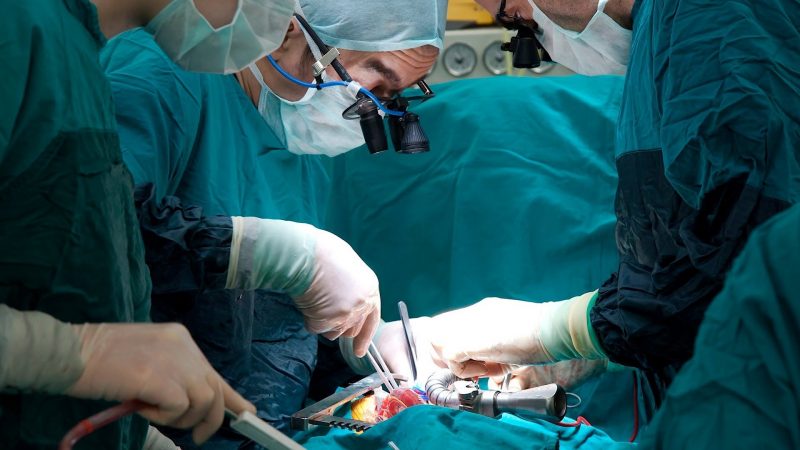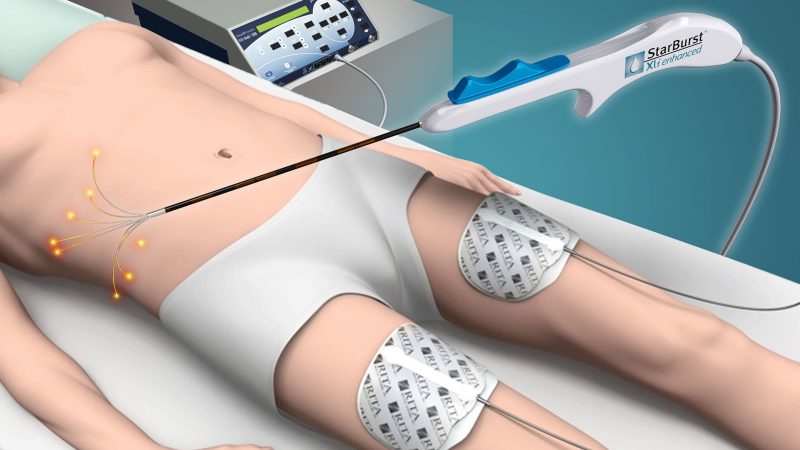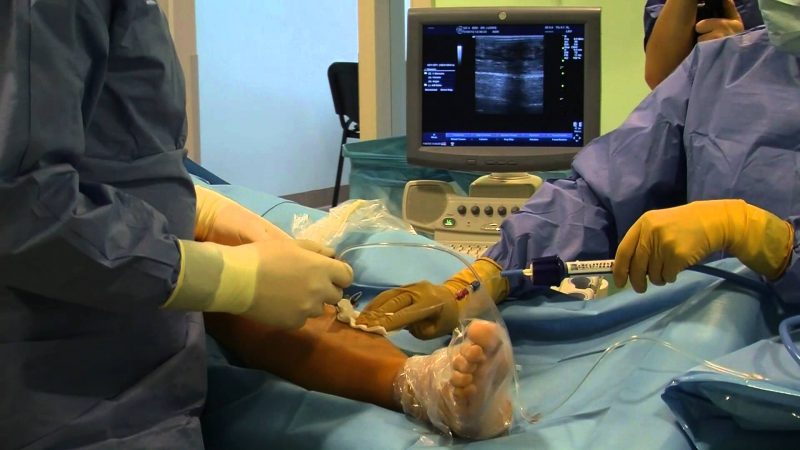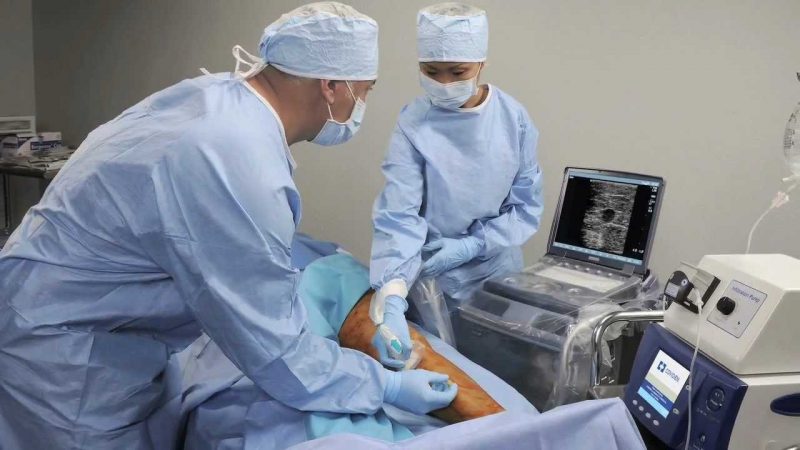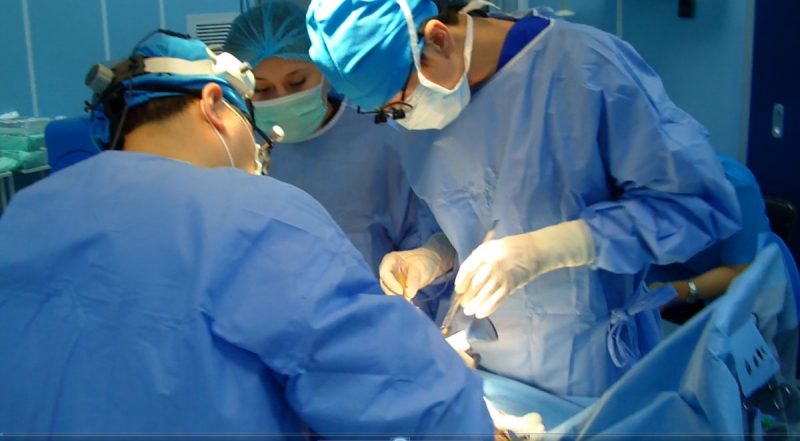Pathologies of cardiac activity require immediate treatment and a careful approach to the choice of treatment methods. Particularly severe complications are dangerous heart failure. In parallel with medications for the treatment of such diseases, a special surgical operation is used - radiofrequency ablation.
Material Content:
General characteristics and indications for RFA operation
Minimally invasive RFA operation on the heart began at the end of the last century. The purpose of the procedure is to remove false pulses in the atria, causing the myocardium to contract irregularly. For this, cardiac surgeons use cauterization electrodes, which are inserted through a catheter into the vessels.
This method allows you to quickly restore your heart rate.
In addition, it has significant advantages over open surgical interventions:
- short recovery period;
- good tolerance;
- sparing methodology;
- minimum pain.
About the effectiveness of RFA statistics says. 85–90% of invasive surgeries brought patients a full recovery.
Indications for radiofrequency therapy will be:
- lack of effectiveness of other therapeutic methods;
- the presence of unwanted adverse reactions to
- anti-arrhythmia drugs;
risk of sudden cardiac arrest due to complications of the pathology.
Ablation is carried out with such pathologies of cardiac activity:
- atrial fibrillation;
- tachycardia of the heart ventricles;
- myocardial hypertrophy (pathological enlargement of the heart);
- reciprocal tachycardia (heart palpitations to high rates);
- congenital anomaly of WPW (Wolf-Parkinson-White) - a syndrome with impaired cardiac conduction.
Preparation for the procedure
Before planning an operation, the doctor must prescribe a course of diagnostic tests for the patient. They are necessary to compile a complete clinical picture, to find out if the patient has pathologies that can cause complications or worsen rehabilitation after RFA.
List of diagnostic measures:
- Blood chemistry. It is necessary to establish the group and Rh factor of the blood. Also, indicators of blood coagulation are determined. It is important to obtain data on the presence of hepatitis B and C, syphilis, human immunodeficiency virus, and infectious diseases.
- Electrocardiography (ECG). Research indicates cardiac muscle activity. Doctors prescribe daily ECG monitoring for accurate results, especially in the case of intermittent arrhythmias.
- Echocardiography. The procedure using ultrasound allows you to see structural changes in myocardial fibers, patency and vascular integrity.
- Stress test. A positive attitude affects the effectiveness of the operation. Therefore, the patient's response to pain is important. There are several types of cardiological stress tests.
- Transesophageal electrophysiological examination. The procedure indicates the exact location of the false pulses. The doctor prescribes it if the patient has signs of rhythm failure, but no changes are visible on the ECG.
- Coronary Angiography Atrial fibrillation in ischemia requires a thorough examination of the vessels. Contrast diagnosis determines the narrowing of the arteries.
- Magnetic resonance imaging. The study shows the heart in dynamics, in different planes.
4-5 days before the scheduled date of surgery, the patient goes to hospital.
In this case, it is necessary to follow the recommendations that increase the effectiveness of the operation:
- the day before RFA, do not take medications (except those prescribed by a doctor);
- limit evening meals before ablation, cancel breakfast on the day of the procedure;
- Do not be nervous, tune in a positive way.
Compliance with all stages of preparation increases the favorable outcome of catheter ablation.
Methodology for radiofrequency ablation
Radiofrequency catheter ablation involves special devices.
RFA is not necessarily carried out in the operating room, but there should be:
- catheter electrodes;
- heart rate apparatus, pulse, pressure;
- electrocardiograph;
- equipment for myocardial catheterization;
- defibrillator;
- medications to stimulate the work of the heart.
Stages of radiofrequency ablation of the heart:
- To exclude allergic reactions to narcotic substances, the patient is examined by an anesthetist before surgery. Based on research and analysis, he selects the appropriate drug and dosage for anesthesia.
- Before RFA, double anesthesia is performed. Sedatives are injected into the vein so that the patient relaxes and does not get nervous. An analgesic injection is injected into the place of the thigh where the incision will be made.
- The area on the body where the piercing will be carried out is treated with an antiseptic substance. Top cover with sterile material.
- The surgeon cuts the skin in the area of the femoral vein, a thin conductor needle is inserted into it. With its help, under x-ray observation, a flexible catheter with a small sensor enters the vessel and advances to the myocardium.
- When the catheters reach the heart, they are connected to an ECG apparatus to watch for changes on the screen.
- To find where the sites producing false impulses are located in the heart muscles, a special EFI of the heart is performed. To do this, a current is introduced through the electrode, which stimulates myocardial contractions. Healthy heart cells do not respond, muscles contract in a normal rhythm.
- When a pathological zone is found, the tip of the electrode is brought to it. The cauterization procedure consists in exposure to high temperature at the lesion site. Tissues of the heart are heated, an artificial blockade occurs.
- After 20-30 minutes, repeated ECG monitoring is performed with the creation of myocardial stimulation. If the result is unsatisfactory and new areas are found, the cauterization procedure is repeated.
- Ablation ends with positive results recorded on the electrocardiogram. The doctor removes the catheter.
- A tight antibacterial dressing is applied at the incision site for a day.
Invasive surgery for arrhythmia lasts from 2 to 7 hours. It all depends on the individual condition of the patient.
After surgery for half an hour, you may feel chest pain. The symptom goes away on its own, without pain relief.
The patient is prescribed bed rest throughout the day, and legs should not be bent. After 24 hours, you can gradually get up and walk around the room. Approximate stay under the supervision of medical staff is 3-4 days after RFA. It is necessary to regularly do an ECG for monitoring (6, 12 and 24 hours after the procedure). It is important to monitor blood pressure and body temperature.
Sometimes the patient is already sent home on the second day. At first, you should avoid working with mechanisms. The first week may be accompanied by an irregular heartbeat. For further monitoring of the state of the heart, it is necessary to be examined regularly by a cardiologist.
Read also:multiple organ failure - what is it
Possible complications
The risk of complications after ablation is small. The procedure is considered safe, less than 1% of all operations have unforeseen consequences.
Complications after RFA can be observed in people at risk:
- patients with blood clotting disorders;
- Diabetics
- older people (> 65 years old).
Undesirable effects observed after ablation can also occur after a certain period of time.
Among them:
- bleeding at the injection site of the catheter;
- mechanical injuries of blood vessels;
- the resumption of myocardial rhythm failures;
- vascular thrombosis;
- pulmonary vein stenosis;
- decreased kidney function.
Any unforeseen complications cause the need for additional medical supervision.
Contraindications for the procedure
The doctor does not perform catheter ablation of atrial fibrillation in the presence of:
- bleeding disorders. They can lead to bleeding during the procedure, the appearance of hematomas;
- special sensitivity to iodine-containing drugs. The contrast to detect changes in the vessels under the x-ray is iodine. An allergy to a component will not allow an RFA;
- diseases of the respiratory system. The impaired functionality of the lungs threatens with complications in the form of respiratory arrest;
- renal failure. In order for the contrast after surgery to be completely eliminated from the body, normal kidney function is necessary;
- chronic arterial hypertension. Due to constant high pressure, there is a high risk of developing myocardial infarction;
- endocarditis. In inflammatory processes in the inner membrane of the myocardium, the introduction of a catheter can cause mechanical damage;
- hypokalemia. An increased level of potassium and calcium in the blood during RFA provokes cardiac arrest.
In addition to contraindications, it is necessary to take into account the patient's condition. Infectious diseases, fever or anemia cause delayed RFA. Doctors often postpone the procedure until the condition returns to normal.
Contraindications are taken into account individually. There are other pathologies and conditions in which ablation is not recommended. The doctor makes a decision based on the possible risks and benefits of the operation for a particular patient.
Prognosis after surgery and further lifestyle
Patients fully recover from radiofrequency ablation for 3-4 months. Moreover, they are required to regularly take anticoagulants to normalize blood coagulation (Aspirin Cardio, Heparin, Enap), drugs for arrhythmia (Propafenone, Veratard, Isoptin).
The key to successful rehabilitation is the patient's compliance with the recommendations of a cardiologist. A correct lifestyle will help prevent recurrence of arrhythmia.
To avoid complications after ablation and recover faster, you must follow these rules:
- lead a moderately active lifestyle, alternate rest and work. This will help the heart to work in normal mode, without sudden loads;
- reduce the amount of salt in the diet;
- adhere to a diet, eliminate fatty foods and foods rich in cholesterol;
- do not drink tonic drinks;
- give up alcohol and smoking.
The prognosis after catheter ablation is positive. Pathology is eliminated in 85% of cases. In 15%, doctors performed RFA again or prescribed thoracoscopy. If the patient refuses the operation, the risk of developing fatal complications increases 7-8 times.
The effectiveness of ablation directly depends on the experience of the cardiac surgeon. If you turn to a good specialist in time, the success of the procedure is guaranteed.


